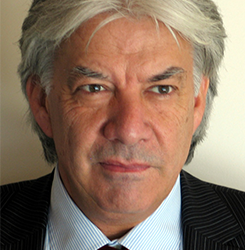LOD-207-00
The Biodynamics of Osseointegration Facts and Clinical Implications
Dr. Peter Schupbach
The Biodynamics of Osseointegration Facts and Clinical Implications
LOD-207-00
Dr. Peter Schupbach
Dental implants are placed into the alveolar bone, with the expectation that they become osseointegrated and that the periimplant mucosa will heal to the abutment surface and fulfill the primary functions of the periodontal tissues, which are attachment and protection of the soft tissue and the underlying bone.This requires that the rather rigid ankylotic like connection between implant and bone replaces functionally the sophisticated suspension via the periodontal ligament as offered by the evolution and, that the structural framework of the periimplant mucosa matches the architecture of the gingiva. The context of an understanding of the elicited host site interfacial healing response will be reiterated for the time period immediately following implant placement up to long term behavior. The role of the implants
LOD-021-00
Soft Tissue Behaviour And Integration Around Dental Implants
Dr. Peter Schupbach
Soft Tissue Behaviour And Integration Around Dental Implants
LOD-021-00
Dr. Peter Schupbach
The scientific evidence on the biomaterial surface TiUniteTM will be given and compared to other implant surfaces. Several studies confirm and support the clinical benefits of the conductive properties of TiUniteTM, allowing bone and soft tissue to adhere along the implant surface and into the pores of the surface. This results in faster osseointegration and higher biological stability, thus minimizing time at risk for effective and safe Immediate FunctionTM. The clinical implications of TiUnite as Immdiate FunctionTM, reduced marginal bone loss, soft tissue integration and predictable esthetics will be discussed. In addition the scientific evidence of micro grooves along the threads and around the implant shoulder will be given. The introduction of the Groovy technology provides yet another step in implant development. With this technology, the speed of osseointegration can be further increased. The biological stability is enhanced by up to 30% allowing the use of groovy implants in soft bone.
LOD-018-00
Biological Data for Bone Integration
Dr. Peter Schupbach
Biological Data for Bone Integration
LOD-018-00
Dr. Peter Schupbach
The scientific evidence on the biomaterial surface TiUniteTM will be given and compared to other implant surfaces. Several studies confirm and support the clinical benefits of the remarkable osseoconductive properties of TiUniteTM, allowing bone to grow along the implant surface and into the pores of the surface. This results in faster osseointegration and higher biological stability, thus minimizing time at risk for effective and safe Immediate FunctionTM. The clinical implications of TiUnite as Immdiate FunctionTM, reduced marginal bone loss, soft tissue integration and predictable esthetics will be discussed. In addition the scientific evidence of micro grooves along the threads and around the implant shoulder will be given. The introduction of the Groovy technology provides yet another step in implant development. With this technology, the speed of osseointegration can be further increased. The biological stability is enhanced by up to 30% allowing the use of groovy implants in soft bone.
INT-046
The latest in Osteointegration
Dr. Peter Schupbach
The latest in Osteointegration
INT-046
Dr. Peter Schupbach
English
The latest in Osteointegration Dr. Peter Schupbach Horgen, Switzerland Oral Histology

